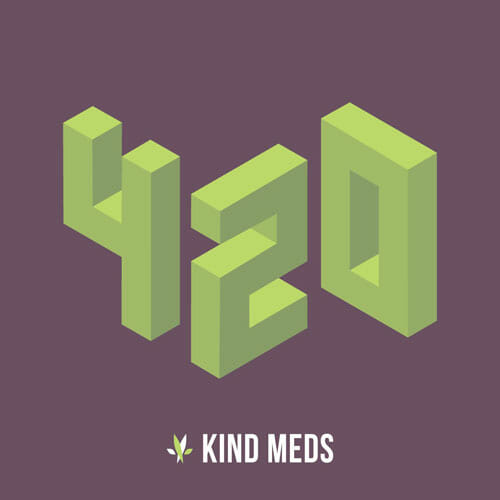All About Cannabis and Coffee
Written by Chris Weatherall on Feb 9, 2023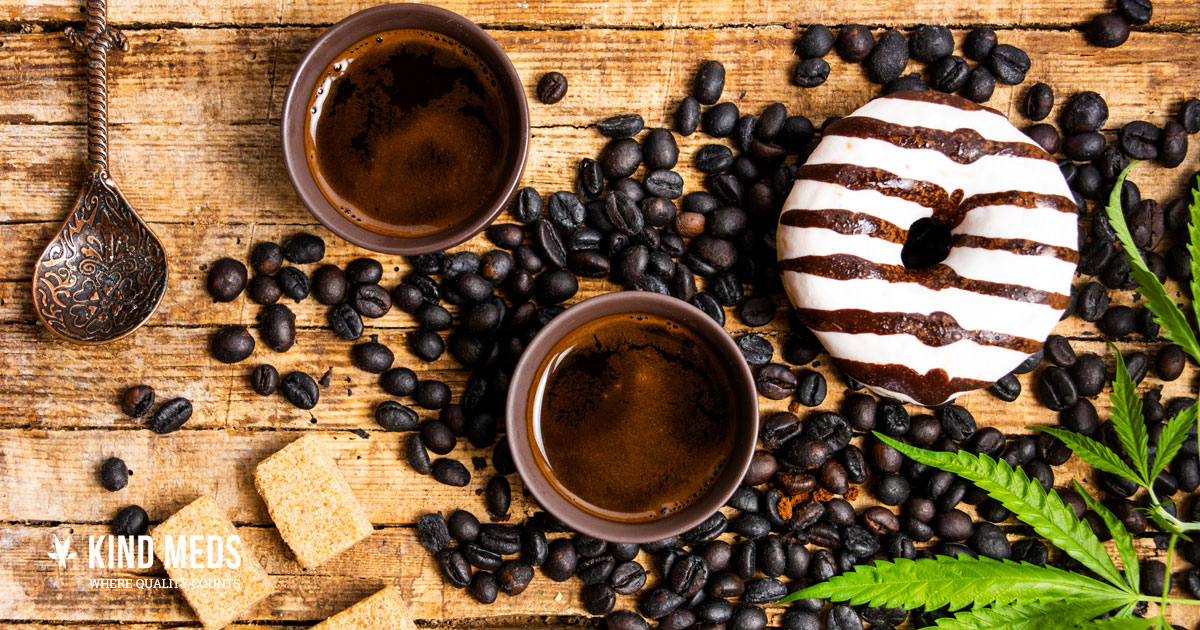
Coffee and cannabis have been used together for centuries, but recent research reveals why combining the two is so great. Research suggests that the combination can enhance the desired effects of both and even reduce unwanted side effects of either if used properly. Put another way: when consumed together, the caffeine in coffee can interact synergistically or antagonistically with THC and other cannabinoids.
So, what does this mean for your morning coffee/cannabis session? Combining the two can lead to a more intense and longer-lasting high, but there’s a slight chance it may also increase the risk of negative side effects of THC, such as anxiety and paranoia. However, don’t forget that THC is not the only cannabinoid in cannabis—the CBD and other cannabinoids in cannabis can counteract some of the negative side effects of caffeine, such as anxiety. For most people, this can make for a more balanced and enjoyable experience.
Before we get into what happens when you consume cannabis and coffee together, it’s important to remember that there are many different ways to ingest cannabinoids – and some are much more conducive to coffee than others.
Inhalation
Inhalation is one of the most popular methods of administering cannabis and involves inhaling the vapor or smoke produced by vaporizing or burning cannabis flower or concentrates. This method of administration allows for fast onset of effects as the compounds in cannabis quickly enter the bloodstream via the lungs. However, while some people love to sip and smoke, it doesn’t work quite as smoothly as infusing your cannabis right into your coffee.
Transdermals
Transdermal administration of cannabis is a method that involves applying a patch, cream, or gel infused with cannabinoid compounds to the skin. This method allows for localized relief and systemic effects, as the compounds are absorbed through the skin and have a specialized encapsulation technology that enables them to enter the bloodstream. You might consider applying a transdermal patch before sitting down with a steaming cup of your favorite joe.
Sublinguals
Sublingual administration of cannabis is a method that involves placing drops or sprays of the plant’s compounds under the tongue. This method allows for quick onset of effects, as the compounds are absorbed directly into the bloodstream through the mucous membrane under the tongue. Sublinguals, like other oral cannabis products, are often considered more discreet and easier on the lungs than either smoking or vaping. Unfortunately, this convenient consumption method isn’t all that compatible with coffee, though if you have cannabis tinctures on hand, you can use those same products to infuse your next cup.
Ingestion
Now we’re talking – ingestion involves taking cannabis products into the mouth and swallowing them just as you would your morning coffee. This method of administration has become increasingly popular as it offers a discreet and convenient way to consume cannabis. It also allows for longer-lasting effects, as the compounds must pass through the digestive system before entering the bloodstream.
While you might pair a traditional edible like a soft chew, chocolate, or cookie with a cup of coffee, there are more thorough ways of combining your cannabis and coffee. Cannabis tinctures, a liquid form of cannabis concentrate, can be infused into either the coffee itself or a variety of tasty coffee add-ons. Oil-based tinctures must be infused into butters, creamers, or simple syrups before using with your coffee. Encapsulated tinctures are water-soluble, meaning they can be mixed right into your preferred brew.
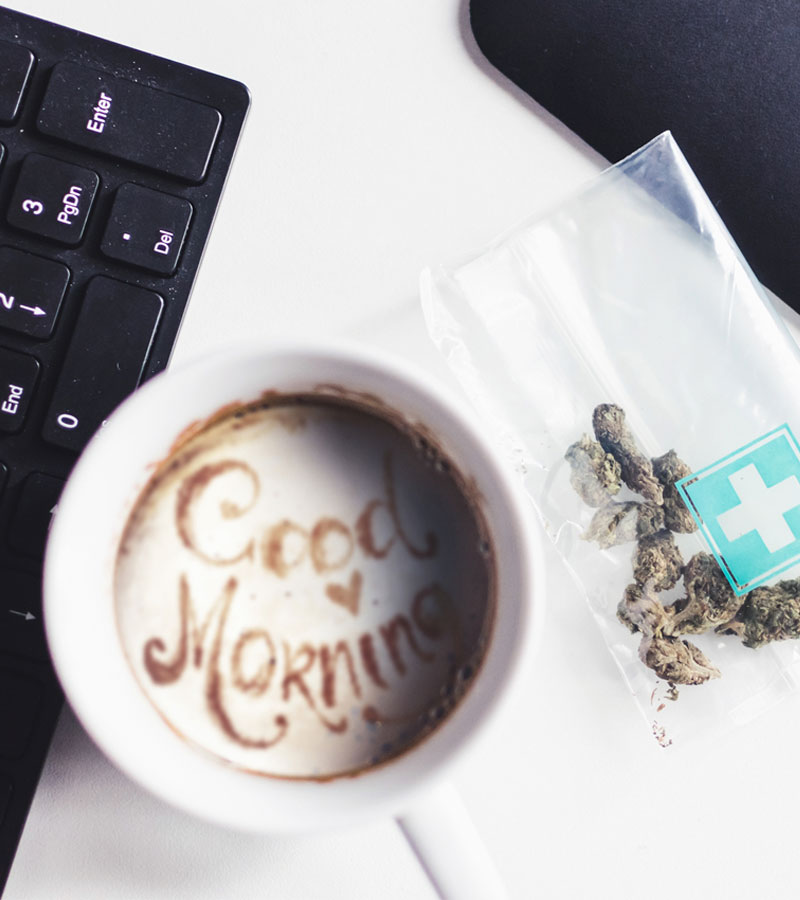
What Are the Benefits of Cannabis-Infused Coffee?
For many people around the world, the ritual of coffee and cannabis has become a major part of the morning routine. If you haven’t tried combining coffee and cannabis, now is a great time to consider it. The combination of caffeine, cannabinoids, and terpenes found in both substances can work together to enhance focus and concentration. In addition, cannabis and coffee are often used in tandem to reduce pain, combat stress, boost mood, and improve focus.
What’s more, when consumed together, the two can counteract some of the unwanted side effects of each individual substance. However, it’s important to note that it’s all about finding the right balance and dosing correctly. With proper dosing, you can experience an added boost to your morning routine without having to worry about jitters or anxiety. This combination can be a wonderful way to enhance the positive effects of your morning routine.
What Are the Effects of Cannabis and Coffee?
So, how does this all work? Believe it or not, there is a surprising amount of chemical interplay going on as you consume your morning cannabis coffee. Caffeine is commonly known as a mild cognitive enhancer that improves focus and short-term memory. It also promotes fat metabolism and prevents drowsiness.
On the other hand, THC can also help with focus but temporarily impairs short-term memory and decreases fat metabolism. In addition, caffeine is a stimulant that activates the sympathetic nervous system, which is part of the body’s stress response. Meanwhile, THC reduces the effects of stress and may even restore memory in animals affected by chronic stress.
When caffeine and cannabis are combined, you may experience a beneficial balancing of effects. However, it’s important to remember that the dose of caffeine, cannabinoids, and even your individual characteristics may change your experience. With this understanding, one can see the relationship between cannabinoids, caffeine, and neurochemistry is a complex topic.
There are many compounds involved in this neurochemistry:
Primarily, cannabis and coffee contain active compounds, including caffeine, cannabinoids like THC and CBD, and neurotransmitters like acetylcholine, adenosine, and dopamine.
Acetylcholine
One of the ways that THC affects the brain is by binding to cannabinoid receptors, which are found in various regions of the brain, including the hippocampus, which is responsible for memory and learning. The hippocampus also contains a high density of receptors for the neurotransmitter acetylcholine, which plays a key role in memory, attention, and other cognitive functions. THC may disrupt the normal functioning of the acetylcholine system in the hippocampus. This can lead to memory impairments over time.
However, combining cannabis with your morning coffee may help you avoid the memory-reducing effects of cannabis. Caffeine blocks the action of an enzyme called adenosine, which is responsible for inhibiting the release of other neurotransmitters, including acetylcholine. As a result, more acetylcholine is released into the brain.
This increase in acetylcholine leads to improved memory and attention, as well as an overall boost in cognitive performance. Additionally, caffeine also binds to acetylcholine receptors and enhances the binding of acetylcholine to those receptors, which further enhances the effects of acetylcholine on the brain.
On the other hand, excessive caffeine intake can lead to increased anxiety and insomnia—effects that can be mitigated by THC and CBD. It’s worth noting that the effects of caffeine and THC on the brain can vary depending on the dose and frequency of use, as well as the individual’s age, overall health, and genetics. Additionally, more research is needed to fully understand the effects of cannabis on the acetylcholine system in the brain.
Adenosine
Adenosine is a neurotransmitter that plays a role in regulating sleep, wakefulness, and overall brain activity. It works by binding to adenosine receptors, which are found throughout the brain. When adenosine levels are high, such as during prolonged wakefulness, it binds to these receptors and induces feelings of drowsiness, leading to sleep. As mentioned, cannabis can affect the adenosine system in the brain.
THC, the primary psychoactive compound in cannabis, has been shown to bind to adenosine receptors and disrupt their normal functioning. This can lead to changes in sleep patterns. It is the primary reason cannabis is often used to promote restful sleep. This effect also lends itself nicely to self-experimentation to see how cannabis affects your sleep/wake cycle.
As mentioned, caffeine works by blocking the action of adenosine. When caffeine is consumed, it blocks adenosine receptors, preventing adenosine from binding to them and reducing feelings of drowsiness. This means that caffeine does not give you energy but instead does not allow you to feel tired, even if the body needs rest. As you can see, caffeine and cannabis used together can provide a balanced impact on both alertness and a healthy sleep cycle.
Dopamine
Additionally, cannabinoids like THC appear to affect the release of other neurotransmitters, including dopamine, which can lead to changes in mood and motivation. It works by binding to dopamine receptors, which are found throughout the brain. Dopamine is responsible for the feelings of pleasure, satisfaction, and reward that are associated with certain activities. THC, the primary psychoactive compound in cannabis, has been shown to bind to dopamine receptors and disrupt their normal functioning. This can lead to changes in mood, such as euphoria and increased sociability.
Long-term, heavy use of cannabis may cause a reduction in the number of dopamine receptors, leading to decreased sensitivity to dopamine. However, caffeine’s blocking of adenosine can increase the activity of other neurotransmitters like dopamine. When dopamine levels are increased, it can lead to feelings of pleasure and satisfaction. This is why caffeine can be used to increase alertness and energy and improve mood and cognitive performance.
How Long Do the Effects of Cannabis-Infused Coffee Last?
The effects of cannabis and coffee tend to last longer than if you’d simply smoked or vaped cannabis. Some people report experiencing the benefits of their canna coffee for hours after consuming it. This is because the complex interplay of cannabinoids and caffeine begins as your drink is digested and metabolized into cannabinoid byproducts and continues as all the compounds reach the brain.
When it hits varies, too. It can often take as few as fifteen minutes for you to begin experiencing the effects. However, some people note an hour or more going by before their cannabis-infused coffee kicks in.
How do I Make Cannabis-Infused Coffee?
As we mentioned above, there are several ways to make cannabis-infused coffee.
Here are our favorites:
- Add cannabis tincture to your coffee. This method requires you to purchase cannabis tincture from your local dispensary, which can be added to your coffee for a potent dose of THC or CBD. Keep in mind that while encapsulated tinctures will mix uniformly with your coffee, oils will not and must be infused with another product or briskly stirred before each sip.
- Brew coffee with cannabis-infused butter or oil. You can create cannabutter or oil by simmering ground cannabis in butter or oil at a low temperature, then straining the mixture. Then, pour a mug of hot coffee into a blender with a teaspoon of cannabutter or oil, blend, and enjoy.
- Add cannabis-infused creamers or syrups to coffee. This method involves purchasing or making cannabis-infused creamers or syrups, which can be added to coffee for a convenient and flavorful way to consume cannabis.
- Use cannabis coffee grounds. You’ll need to purchase coffee beans that have been infused with cannabis extract, which can be brewed like regular coffee.
- Make your own cannabis honey to add to your fresh cup. Check out our Cannabis Honey Coffee Recipe to give this one a try!
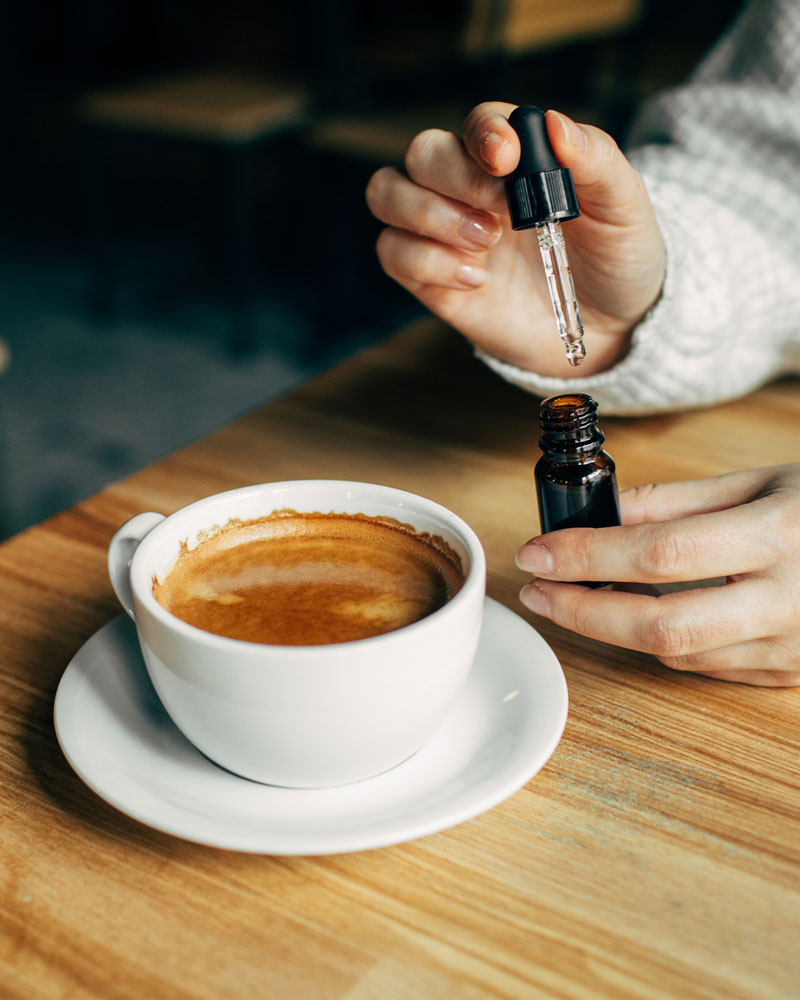
Risks Associated with Cannabis-Infused Coffee
Mixing caffeine and cannabis may have varying effects on different individuals. It is important to be cautious and consider your personal tolerance for both substances. If you are sensitive to caffeine, adding cannabis strains with high THC content could lead to feelings of anxiety and paranoia. However, if you enjoy coffee, combining it with cannabis may enhance the energizing effects.
It is recommended to start with a small dose of 3-5 mg and wait 30 minutes before increasing the amount. Keep track of your usage, including the time of day, amount, and any adjustments made, and reflect on how you feel before, during, and after to determine if the combination is suitable for you. If you are an experienced cannabis user, you’ll likely know how much cannabis to incorporate into your morning coffee routine.
What Are Some of the Best Strains of Cannabis to Pair Coffee?
Of course, different strains of cannabis can have different effects, especially as the ratio of THC to CBD varies. Sativa-dominant strains are commonly known to provide an energetic, uplifting high and boost social productivity, while Indica-dominant strains are known for their relaxing and couch-lock effects. It’s worth noting that coffee is also a stimulant, so if you are looking to enhance the effects of caffeine, a sativa hybrid strain might be a better option than the relaxing indica strains.
You’ll also want to consider cannabis strains with terpene profiles known for energy, focus, or concentration.
We recommend:
- Limonene, which can boost mood, focus, and energy
- Caryophyllene, which may have cognitive and focus benefits
- Pinene, which can contribute to better concentration, focus, and energy
Mixing Cannabis and Coffee: There’s Sweet Spot for All
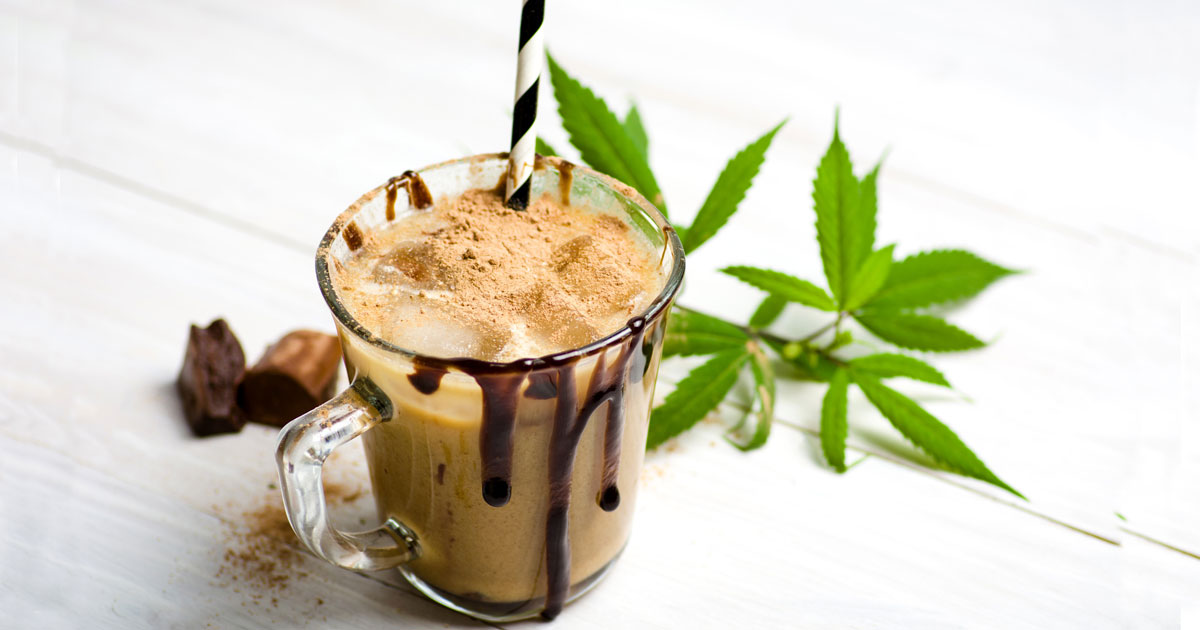
Mixing cannabis with coffee can provide a unique combination of effects that can enhance the benefits of both substances. The stimulating effects of caffeine can be balanced by the relaxing effects of cannabis, helping to improve focus and concentration while reducing stress and anxiety. Additionally, using a sativa or hybrid strain of cannabis can enhance the energizing effects of coffee, making it a great option for those who want to boost their productivity and focus.
It’s important to remember that the effects of your cannabis and coffee routine can vary depending on the individual and the strain of cannabis used. Be sure to experiment and find a strain that works best for you and your body. It’s always best to start with small doses, monitor your reaction, and track your experience. Need a recipe to get started on your canna-coffee journey? We’ve created a cannabis and coffee brewing guide to help.
Sources:
- https://www.frontiersin.org/articles/10.3389/fnins.2011.00116/full
- https://www.ncbi.nlm.nih.gov/pmc/articles/PMC2931547/
- https://onlinelibrary.wiley.com/doi/full/10.1111/joim.12737







